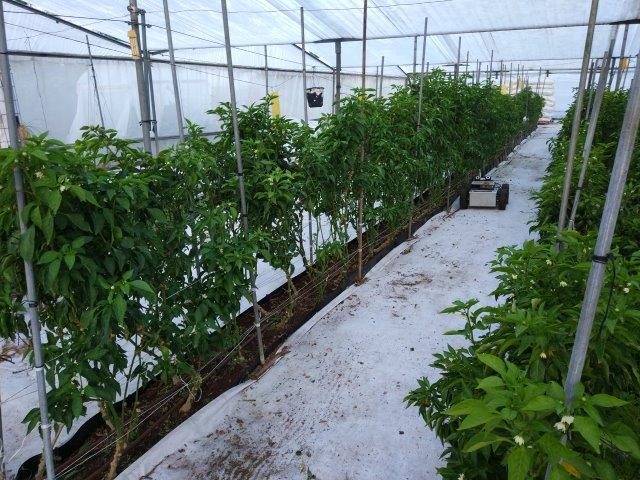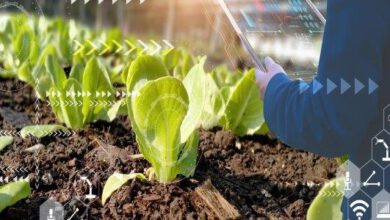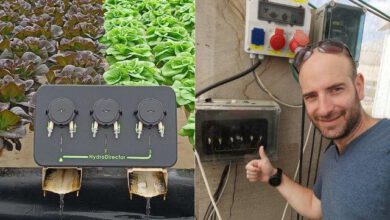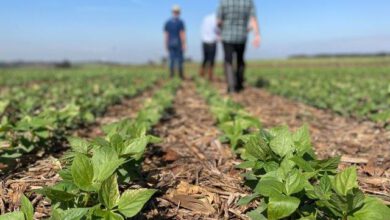Agricultural robotics research activity
An 'iROBOT for greenhouses' – uses an interfacing algorithm based on DEEP LEARNING for the identification of different plant indices

Avital Bechar, an engineer and researcher who works at the Institute of Agricultural Engineering (ARO) , is aiming together with his colleagues and research students to find durable solutions for real problems, which currently trouble Israeli agriculture and agriculturists.
One such problem is the great variability of the agricultural ‘products’, which have different shapes and growth patterns, e.g., fruit, legume or cereal , etc. This makes the adjustment of the technological solution to the working environment essential and, in fact, demands coming to terms with the above-mentioned great variability. However, the proposed solutions must be economically feasible, simple and robust.
“one of the solution reached and developed by Avital Becher and his team is ‘smart and adaptive algorithm’, which can adapt itself to a constantly changing working environment.”
One of these developments is a ‘smart’ robot for different agricultural tasks (such as spraying, monitoring or yield assessing) which operates inside greenhouses where pepper is grown. This robot – an ‘iROBOT for greenhouses’ – uses an interfacing algorithm based on DEEP LEARNING for the identification of different plant indices. As the robot moves inside the greenhouse, between its rows it collects diverse data about the crop, without making any physical contact with the plants.
These data – the overall weight of the pepper fruit (to an accuracy of 100 grams), the number of leaves (to the accuracy of 30 leaves), the general state of the plant under surveillance, etc., are obtained and saved by the robot for the grower’s future use . The robot fulfils this task in navigating autonomously inside the greenhouse, and as previously explained, with no physical contact with the plants.
 |  |
A robot equipped with a SONAR sensor was used in an experiment conducted at the grounds of the ARO .
Therefore, for example, the robot is able to survey a number of greenhouse rows simultaneously. In other words, the use of this technology enables the grower to acquire a close-to-real estimation of the crop’s yield from a given plot, irrespective of whether the plot is in a greenhouse or an open field.
The use of robotic arms supporting a high-resolution, hyperspectral camera, which can detect early signs of leaf diseases (normally caused by fungi or viruses) in greenhouse crops and to monitor their development, is becoming increasingly widespread in modern agriculture. Avital
Bechar’s team is looking into the feasibility of this technology’s integration in everyday agro-techniques for the early detection of concentrations of plant diseases.
“Another research project carried out by Bechar’s team members is the development of a robotic arm aimed at carrying out selective pruning of deciduous fruit trees during their dormancy stage (usually during the winter).
 | .jpg) |
This development is an expression, one of many others, of the HUMAN-ROBOT interaction.” The robotic arm is equipped at its end with a specially-designed pruning saw. The arm is autonomously directed to the branch, which was a-priori identified and defined for pruning by the robot’s human operator.
The robotic arm is then able to maneuver to the branch destined for pruning and carry out the required operation. This action is a manifestation of the principle of MAN-MACHINE and/or MAN-ROBOT interfacing.
Last but not least is the development of electrostatic pollination, where pollen grain is charged by an electrostatic charge, to make the pollination process in fruit- trees’ flowers more efficient.
A more efficient pollination process will in turn bring about (for example in almond trees), a greater degree of fertilization, culminating in higher fruit yields. The principal beneficiary of this more efficient pollination will be, without doubt, the grower, who will not be the only one to gain from this development. Thus, the outstanding connection between these extraordinary physiological processes, which occur in nature and the most advanced technologies are realized. (This last project was part of a Master’s Degree thesis carried out by Prof. Avital Bechar, under the supervision of Dr. Shmuel Gan-Mor).
For more info please contuct Pro’ Avital Bechar <avital@volcani.agri.gov.il>




